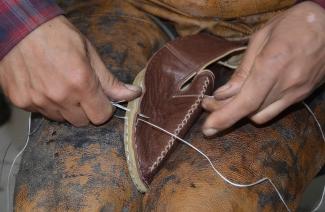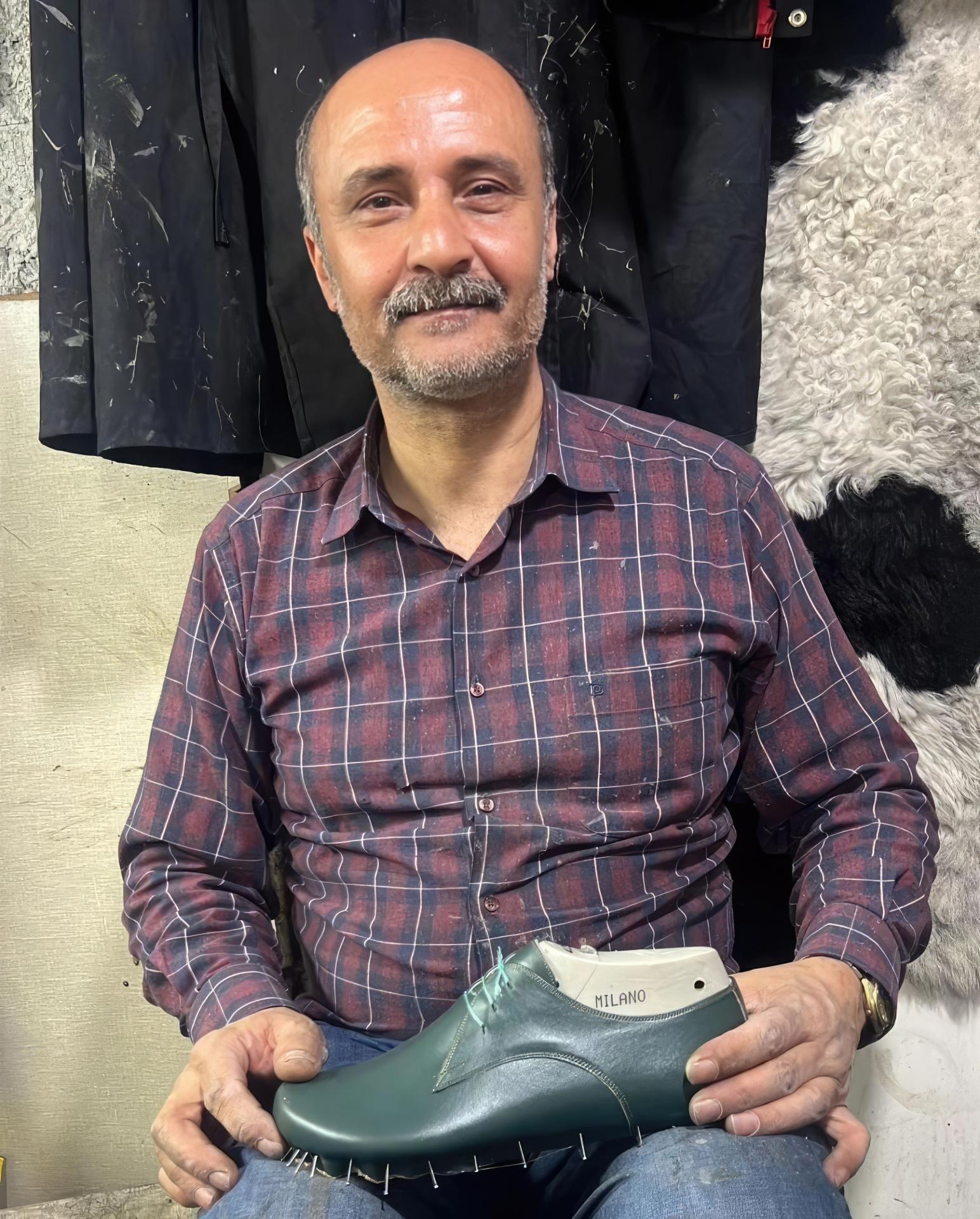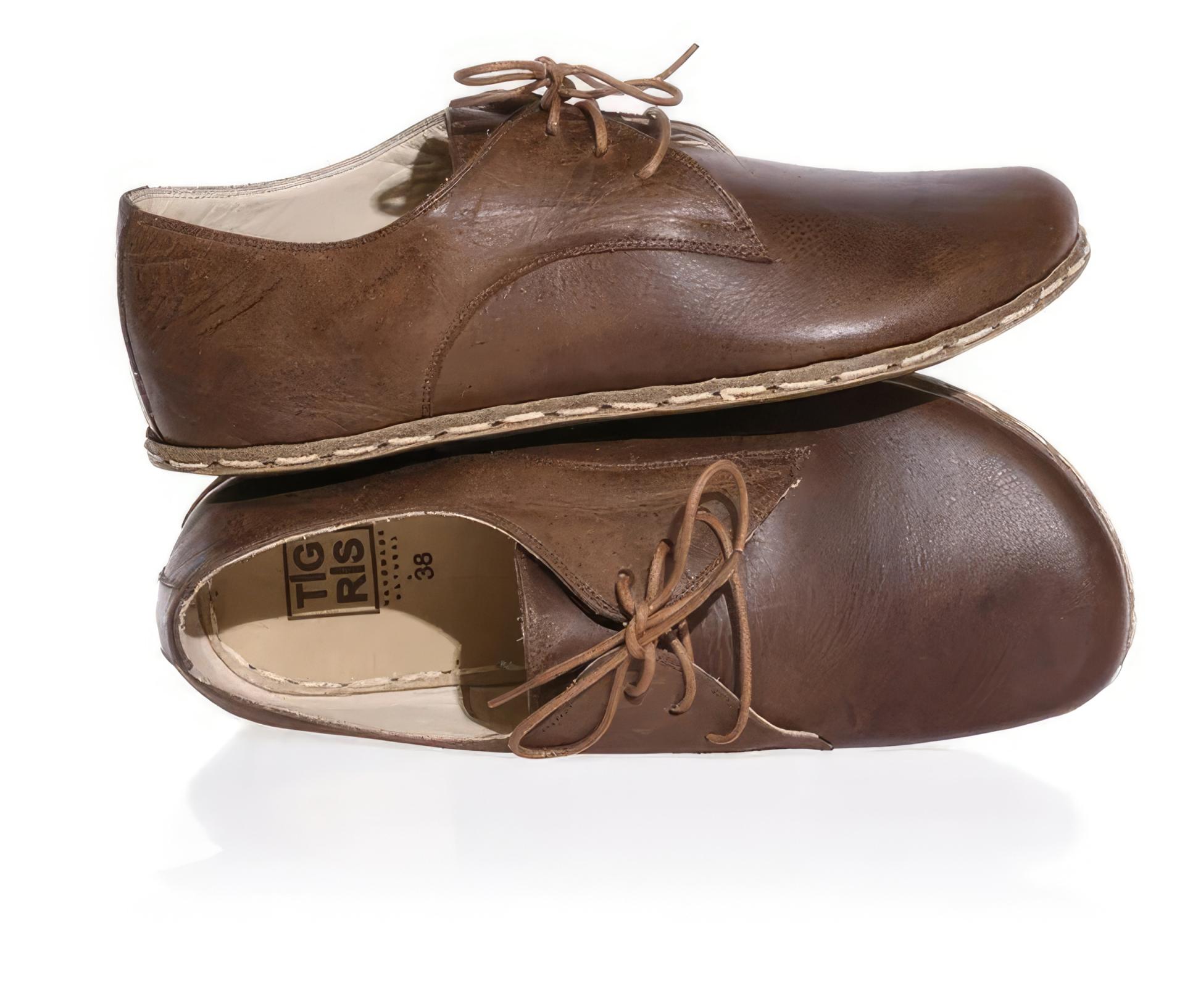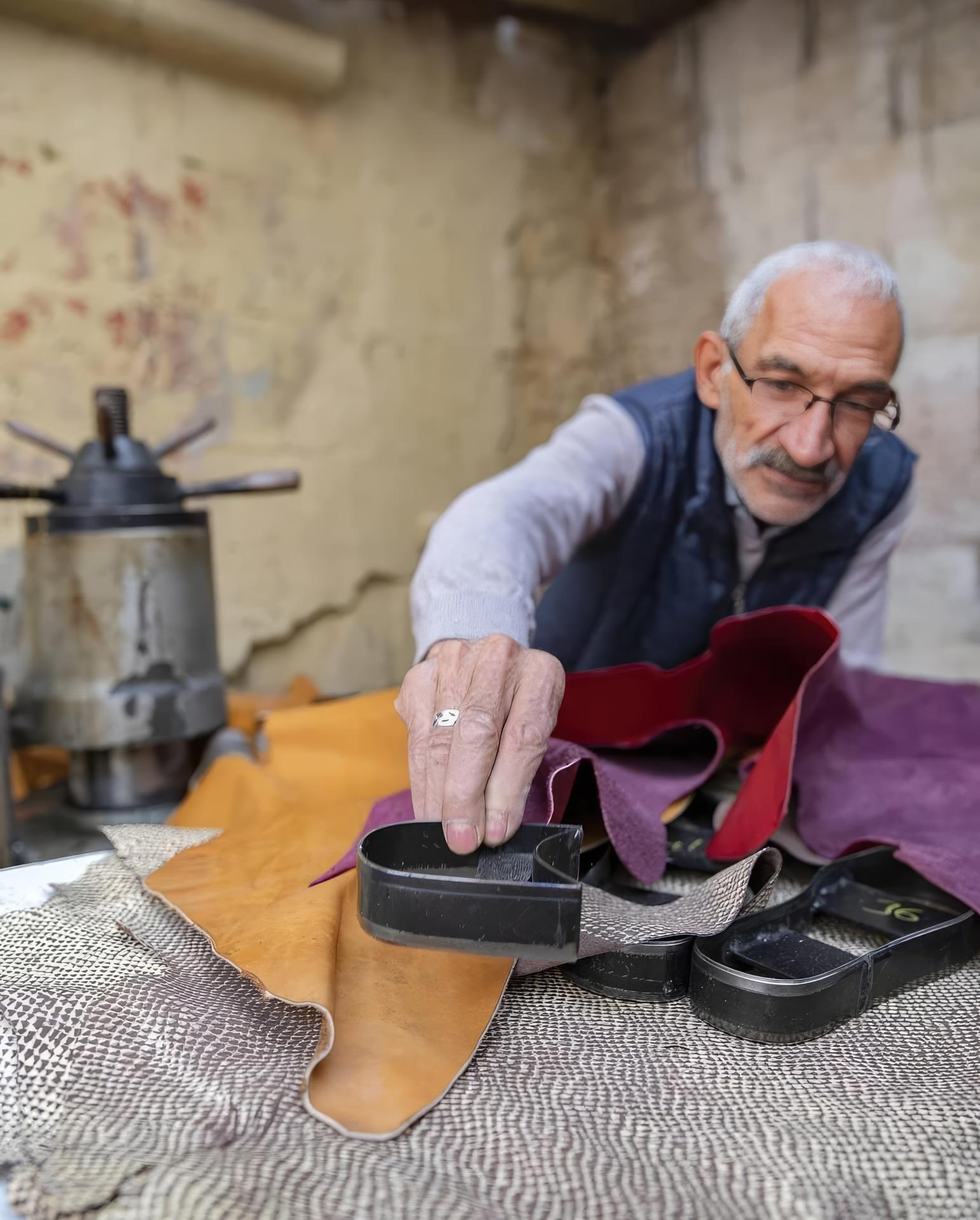
Selahattin Sep (Kurdish) comes from a long line of shoemakers in southeast Anatolia, Turkey. “In our culture, everychild learns a craft. Some become blacksmiths, some become tailors, and some [become] cobblers. Craftsmanship holds a significant place in our cultural maintenance. The crafts of my family date back to vineyards and shoe production from producing the leather, curing the leather, and assembling the shoes.
When I came to the United States, I wanted to find a way to bring some of my culture here and I decided to bring these shoes that are a part of my family history with me,” Sep says. Sep and his family design and create yemeni, a type of heelless leather shoe made entirely by hand by his brand Tigris Handmade. Yemeni is local to the southeastern Anatolia region. The shoe was traditionally worn by people from the region but is now produced by only a limited number of artists in Gaziantep and Kilis. Yemeni makers are called köşger, and the tradesmen who sell them are called kavaf.

Sep’s shoes are made without the use of any synthetic materials; the leather is ethically sourced and he says the shoe offers numerous health benefits. “They are a sustainable fashion product, shoes of the Earth, which are proudly built by hand,” he says.
“We use a shoemaking technique that has been passed down from generation to generation for more than 700 years. The shoes are made from all natural and ethically sourced leather, beeswax-coated cotton twine, plant-based glue, and natural dyes. We stay true to tradition throughout the entire process. The final product is a simple and beautiful shoe that is extremely comfortable and durable,” Sep says. Yemeni allow the feet to breathe by extracting sweat due to the porous structure of the leather from which it is produced. “These shoes are designed to keep feet healthy and connected to the Earth, using organic materials from this land. Our products keep the unique tradition and technique alive and share with others outside of our culture,” Sep says.

Sep describes the process for making yemeni: “The tanned cattle and buffalo skins forming the base are called hearts gön, and the cow skins used on the face are called sahtiyan. Sheepskin is used in the inner lining, and cow leather is used in the inner sole, called oak. The parts of the shoes are adhered with a plant-based glue called çiriş. After the cutting of the leather, the laborious details of sewing by hand begins. The edges of the shoe are carefully sewn using a beeswax twine with the help of a leather needle called biz. The upholstered Yemeni is inverted and inserted into the mold. After cutting around it, the form is removed from the mold. The yemeni is then ready to be remolded.”

Cultural continuity is important to Sep, so Tigris Handmade continues to train new masters to continue their cultural tradition of shoemaking. “In Mesopotamian culture, handicrafts hold a significant importance. As nomadic people, we constantly roamed in search of pastures for our livestock. Since we did not have much access to our written language, we relied on oral storytelling for intergenerational learning and the passing down of wisdom. These stories, along with the tradition of handicrafts, are essential cornerstones of cultural preservation because they are maps and symbolic of who we are,” he says.

In today’s industrialized world, quality craftsmanship is to be valued. “There are still a few master craftspeople who produce yemeni in Diyarbakir, Gaziantep, and Kilis dedicated to maintaining this original artform, honoring our culture and the masters who came before them,” Sep says. “Tigris Handmade is proud to support these skilled craftsmen and the high quality and all natural products that they produce. In a world that is becoming more and more dependent upon technology, we have taken a step back to celebrate the shoe that has stood the test of time in its authentic and original form.”
The Cultural Survival Bazaars are Back! December 14–17, 2023 • The Prudential Center, Boston, MA
Stay tuned for more dates and locations: bazaar.cs.org
